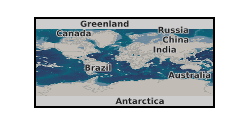2014
Type of resources
Available actions
Topics
Keywords
Contact for the resource
Provided by
Years
Formats
Representation types
Update frequencies
Scale
Resolution
-

This poster on the UKCCSRC Call 2 project, Novel reductive rejuvenation approaches for degraded amine solutions from PCC in power plants, was presented at the Cardiff Biannual, 10.09.14. Grant number: UKCCSRC-C2-189.
-

The data is collected in North China Electric Power University (NCEPU) on a 1-inch bore, gas-liquid two-phase, high pressure (up to 72bar), ambient temperature CO2 flow test rig from 19th May to 3rd June 2016. Single phase gas and liquid information are provided by Coriolis meter and mixed together. Then a vertical Coriolis meter is used to measure the two-phase mixture together with a DP transmitter measuring differential pressure across the vertical Coriolis meter under test. UKCCSRC Call 2 project: CO2 Flow Metering through Multi-Modal Sensing and Statistical Data Fusion. Grant number: UKCCSRC-C2-218. Published papers: 1) Mass flow measurement of two-phase carbon dioxide using Coriolis flowmeters (https://doi.org/10.1109/I2MTC.2017.7969891). 2) Mass flow measurement of gas-liquid two-phase CO2 in CCS transportation pipelines using Coriolis flowmeters (https://doi.org/10.1016/j.ijggc.2017.11.021).
-

This poster on the UKCCSRC Call 2 project, UK demonstration of Enhanced Calcium looping, and first Global Demonstration of Advanced Doping Techniques, was presented at the Cardiff Biannual, 10.09.14. Grant number: UKCCSRC-C2-209.
-

This poster on the UKCCSRC Call 2 project Shelter and Escape in the Event of a Release of CO2 from CCS Infrastructure (S-CAPE) was presented at the UKCCSRC Manchester Biannual Meeting, 13.04.2016. Grant number: UKCCSRC-C2-179.
-

Final report for UKCCSRC Call 2 project, UK demonstration of Enhanced Calcium looping, and first Global Demonstration of Advanced Doping Techniques. Grant number: UKCCSRC-C2-209.
-

This poster on the UKCCSRC Call 2 project Investigating the radiative heat flux in small and large scale oxy-coal furnaces for CFD model development and system scale up was presented at the CSLF Call project poster reception, London, 27.06.16. Grant number: UKCCSRC-C2-193. Oxy-fuel (coal or biomass) combustion significantly changes the heat transfer properties of power plant furnaces. Thus future power plants using oxy-fuel technology will rely greatly on computational modelling. This project aims to collect combustion and heat transfer data from both small and large scale furnaces and to validate the computational model in order to make it ready for future technology scale up. Specific objectives are: • Take measurements at the 250 kW oxy-coal furnace at PACT national facilities in Sheffield, including combustion and heat transfer data. • Take measurements at a 35 MW oxy-coal furnace in China. • Validate CFD models developed and investigate the combustion and heat transfer properties in both large and small furnaces.
-

This poster on the UKCCSRC Call 1 project Oxyfuel and exhaust gas recirculation processes in gas turbine combustion for improved carbon capture performance was presented at the CSLF Call project poster reception, London, 27.06.16. Grant number: UKCCSRC-C1-26. This research is concerned with oxyfuel combustion in gas turbine applications, in particular concentrating on the use of modern swirl-stabilised burners. Oxyfuel is considered a particularly challenging idea, since the resultant burning velocity and flame temperatures will be significantly higher than what might be deemed as a practical or workable technology. For this reason it is widely accepted that EGR-derived CO2 will be used as a diluent and moderator for the reaction (in essence replacing the role of atmospheric nitrogen). The key challenges in developing oxyfuel gas turbine technology are therefore: • Flame stability at high temperatures and burning rates. • The use of CO2 as a combustion diluent. • Potential for CO emission into the capture plant. • Wide or variable operating envelopes across diluent concentrations. • Differences in the properties of N2 and CO2 giving rise to previously unmeasured flame heat release locations.
-

This poster on the UKCCSRC Call 2 project, The Development and Demonstration of Best Practice Guidelines for the Safe Start-up Injection of CO2 into Depleted Gas Fields, was presented at the Cranfield Biannual, 21.04.15. Grant number: UKCCSRC-C2-183.
-

This poster on the UKCCSRC Call 2 project Towards more flexible power generation with CCS was presented at the UKCCSRC Manchester Biannual Meeting, 13.04.2016. Grant number: UKCCSRC-C2-214.
-

This presentation on the UKCCSRC Call 2 project Novel reductive rejuvenation approaches for degraded amine solutions from PCC in power plants was presented at the UKCCSRC Manchester Biannual Meeting, 13.04.2016. Grant number: UKCCSRC-C2-189.
 NERC Data Catalogue Service
NERC Data Catalogue Service